Underwater 2025: 33 engineering students from Mines Paris – PSL are designing an underwater system for a scientific mission in the Mediterranean
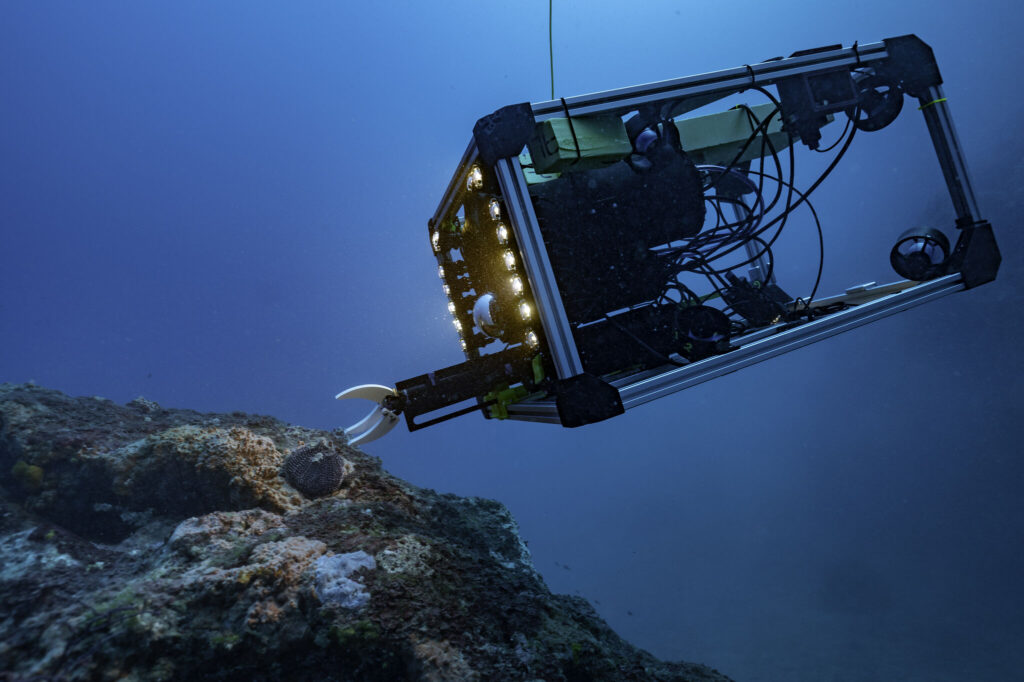

At the heart of this project lies a dual challenge: on the one hand, to design a technological device capable of operating in the extreme conditions of the Mediterranean deep sea; on the other hand, to participate in a mission to collect a marine organism of high scientific value in a respectful manner. The targeted sponges, which are attached to rocks in areas that are difficult to access, are known for their ability to produce natural molecules with potential therapeutic effects, particularly in the fields of oncology, antibiotic therapy, and immunology. These missions, usually reserved for specialized research centers or large-scale oceanographic campaigns, were simulated and partially carried out by the students themselves. Grégory Genta Jouve, chemist and CNRS researcher at LEEISA (Laboratory of Ecology, Evolution, and Interactions of Amazonian Systems), accompanied the students on this project.
The system developed is based on an architecture divided into three main components. At the heart of the operation is an ROV (Remotely Operated Vehicle), an underwater drone operated from the surface, entirely designed by the students and equipped with high-resolution cameras, navigation sensors, lighting devices, and a robotic arm for sampling.
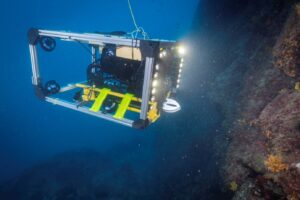
(Zébulon, the Underwater 2025 ROV)
This ROV is deployed from a surface catamaran, also developed by the students, which provides the link between the drone and the control center.
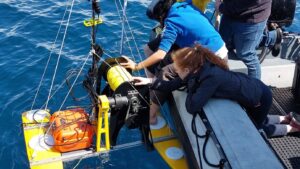
(Bernard & Bianca, the Underwater 2025 catamaran)
The latter is located on land, nearly seven kilometers from the site of operation, and allows the entire system to be controlled in real time using a dedicated software interface. The whole system relies on robust and continuous data transmission between the ROV, the catamaran, and the control station, illustrating the complexity of a project combining robotics, electronics, telecommunications, and embedded computing.

(The Underwater 2025 remote operation station)
Sea trials were conducted at several iconic sites along the Mediterranean coast, selected for their topographical features and ecological richness. These included the Tombant des Américains off the coast of Nice, a popular diving spot known for its spectacular relief; Cap d’Antibes, known for its steep seabeds and coral habitats; and the Lérins Islands off the coast of Cannes, which offer remarkable underwater biodiversity.
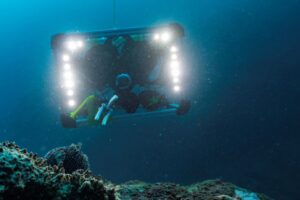
(Zébulon tries his hand at sampling)
These locations enabled the students to test their system in the real-life constraints of the marine environment: currents, salinity, reduced visibility, depth, pressure… not to mention seasickness for some, all parameters that had to be taken into account in the design and piloting of the drone.
To ensure the feasibility of the project and the safety of operations, the students were able to draw on the valuable expertise of two partners. The National Nautical Training Center of the French National Gendarmerie (CNING), based in Antibes and headed by Command Veyrunes, provided crucial logistical and operational support, including assistance with launching, technical supervision, and equipment and personnel safety.
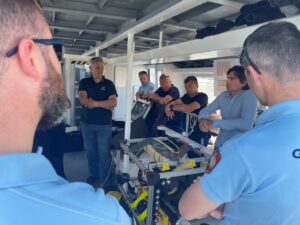
(Briefing with CNING divers)
For its part, Easydive, a company specializing in diving training and underwater exploration, provided its fleet to transport equipment and ensure safety on the water during the experimental campaigns. This synergy between the students, the teaching staff, and the professionals involved was one of the key factors in the project’s success.
This project fully illustrates the educational approach of Mines Paris – PSL: training engineers through action, in a setting where theoretical knowledge is used to solve concrete and complex problems. Throughout the ten weeks, the students were largely autonomous in defining needs, planning work, choosing technical solutions, manufacturing and integrating the system, conducting field tests, and analyzing results.
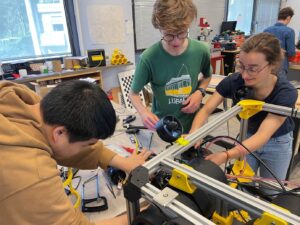
(Zébulon assembly)
Supervised by teachers and experts, they learned to adapt to uncertain environments, manage unforeseen events, and work in multidisciplinary teams—all essential skills in the professional world.
Although it originated in an educational setting, this project opens up very concrete prospects. The underwater system developed could be reused or adapted in future research in marine robotics, ecological monitoring, or exploration of inaccessible areas. It is a representative example of how engineering students at Mines Paris PSL approach innovation: in the service of science, society, and environmental preservation.
Through this project, the students have demonstrated their ability to take on ambitious technical challenges while engaging in a responsible scientific approach. They thus confirm the school’s vocation to train inventive, operational engineers who are open to the major challenges of today.
The Underwater 2025 teaching team would like to thank:

À Sophia Antipolis, sur le campus Pierre Laffitte, Mines Paris pour l’Océan a pour objectif de former les élèves du cycle Ingénieur Civil des Mines de...